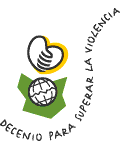Facts on Human Trafficking
Human trafficking is a modern form of slavery and affects all parts of the globe. It is difficult to verify exact statistics. The true problem is likely to be significantly bigger than the statistics suggest.
Worldwide, there are an estimated 27 million modern day slaves.
About 80% of trafficking victims are women, 70% of whom are trafficked for the commercial sex industry.
The Uzbek government estimates that around 1000 Uzbek women are illegally trafficked from their country each year. In the past decade, 5 or 6 trafficked Uzbek women have been murdered each year in the United Arab Emirates. Many others have been imprisoned for visa offences.
In some parts of Africa and in the Mekong region, the vast majority of those trafficked are children.
Trafficking affects virtually every country in the world. The largest numbers come from Asia and the former Soviet Union, which is now believed to be the biggest source of trafficking for the sex industry. Victims are sent to Asia, the Middle East, Western Europe and North America.
In many countries, women make up the largest proportion of traffickers. In Latvia, women made up 53% of trafficking convictions.
In a 9 country survey of nearly 800 women working in the sex trade, 89% wanted to leave the industry, 75% had been homeless at some point and 68% had symptoms of post-traumatic stress disorder.
Human trafficking in Eastern Europe is estimated to generate between US$5 and 22 billion in annual revenue.
Sources: US Department of Justice, US State Department, Salvation Army Canada, UNIFEM, Central Asia-Caucasus Institute



